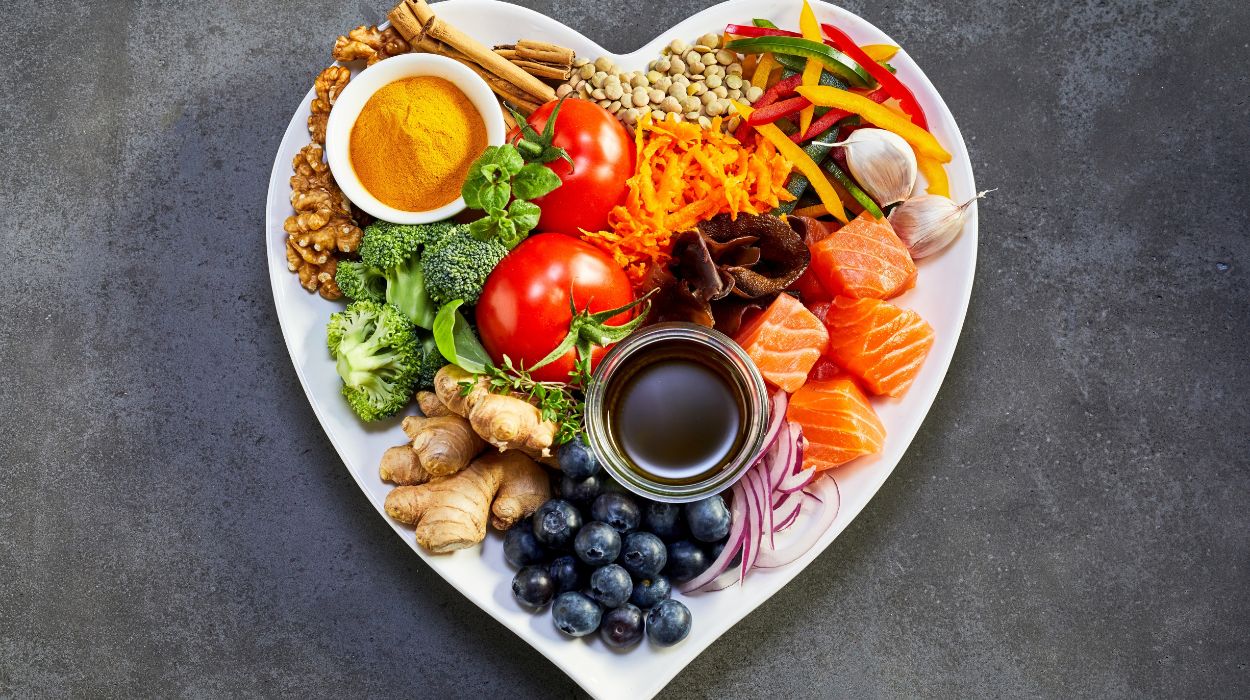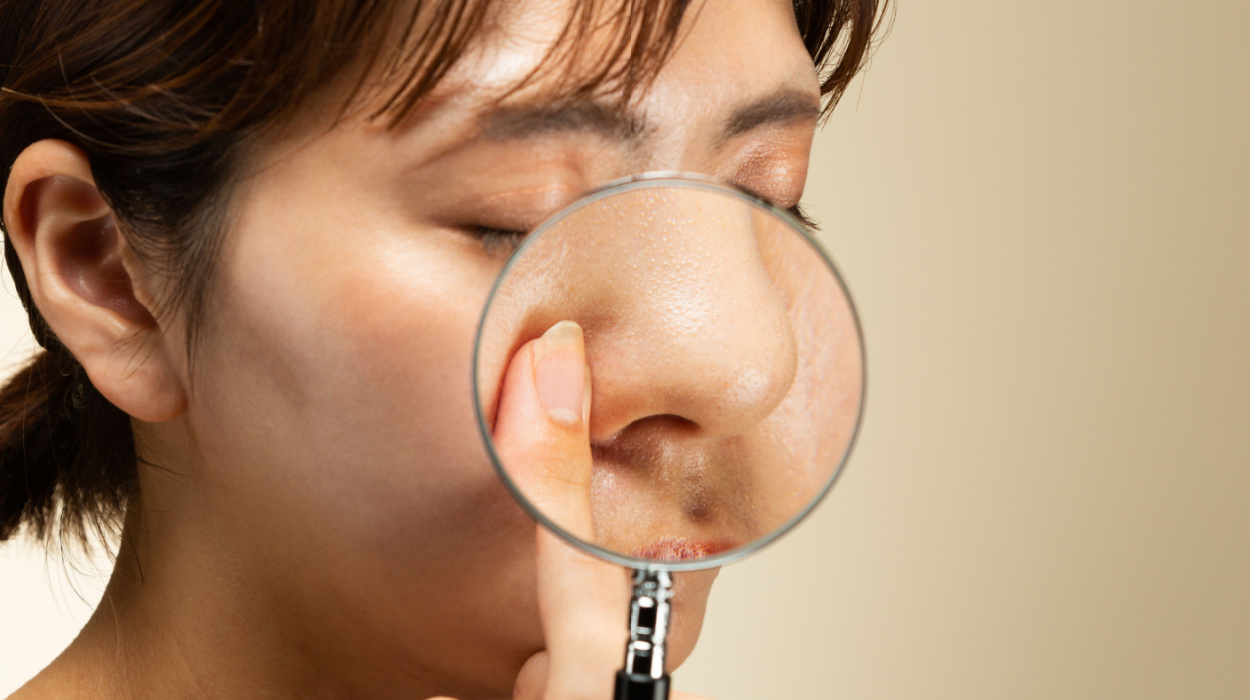People often talk about losing body fat. Nose fat is not such a widely discussed subject. Yet, it is problematic for many people.
A 2020 study establishes that anxiety and poor mental health are more present[1] in people who are unhappy with their nose shape and those who seek rhinoplasty (nose jobs). People wondering how to lose nose fat may consider cosmetic surgery.
Fortunately, there are ways to lose nose fat that don’t involve plastic surgery. This article will review the various options.
How To Lose Nose Fat Effectively
You can lose nose fat effectively by:
- Eating foods low in sodium that will not cause water retention.
- Exercising.
- Doing facial exercises.
- Drinking water.
Best Ways To Reduce Nose Size Naturally
People unhappy with their nose shape may think plastic surgery is their only option. But there are also ways to reduce your nose size naturally. Natural results won’t be as dramatic as plastic surgery, but they will improve your look.
This section will discuss those options in greater detail.
Follow A Healthy Diet

A healthy diet that’s low in salty foods can help your nose look slimmer.
Certain foods make your face puffy. Foods high in salt[2] make you retain water, so your face appears swollen. If you avoid these foods, your nose and face won’t look as fat.
You will also improve your diet and lose face fat by eating more protein and reducing carbs. Carbs tend to be high in water-retaining properties,[3] contributing to water retention that may make your face look puffy. Protein will also help you lose weight since it is thermogenic and increases satiety.
Protein also provides energy,[4] so you improve your athletic performance. It keeps you full,[5] so you snack less. It also aids with muscle tone development.[6]
You should generally eat low-calorie foods to lose weight and avoid water retention. Fresh fruits and vegetables are recommended. Follow a calorie-deficit diet to keep the pounds off.
Facial Exercises
Several facial exercises can reduce the appearance of a puffy face. It may seem far-fetched, but research has established that the exercises can contribute to facial rejuvenation[7] and muscle tone.
Several facial exercises will provide a slimming effect throughout your face. But there are specific nose-slimming exercises that will be even more effective. Here are a few you can try.
Lift and Smile: This exercise lifts the muscles near your nostrils. It also reduces fine lines and improves breathing. Here’s how to perform it:
- Smile and push your nose upward.
- Push it downward while applying slight pressure with your middle finger.
- Repeat two times.
Alternate Nose Breathing: Nose breathing increases the tone in your nose cartilage. It also reduces anxiety.[8] To perform this nose exercise.
- Use your thumb to close your left nostril. Hold closed.
- Breathe in with your other nostril. Then, hold both nostrils closed for one second.
- Remove your finger from your left nostril and exhale. Use your index finger to hold your right nostril closed.
- Breathe in through the left nostril.
- Hold both nostrils closed for one second, then release.
- Repeat for one minute.
Cheek Tap: The cheek tap boosts circulation in the areas surrounding your nose. It can shape the area around the nose for a slimming effect.
- Start by puffing your cheeks out.
- Press down on your upper lip with your index, middle, and ring finger.
- Lightly tap your cheek with the fingers of your other hand.
- Continue for 10 seconds, then switch sides.
Bull Dog Push: The bulldog push will sharpen the nose and reduce the appearance of flaring nostrils.
- Place both index fingers on each side of your nose with the base of the index finger close to the nostrils.
- Breathe in while flaring your nostrils. Press with your index fingers to reduce the nostril flare.
- Breathe out and release.
- Repeat five times.
Nose Lift: The nose lift increases muscle tone in the nostril area to sharpen the nose.
- Pinch your nose with your index finger and thumb. Your fingers should be over your nostrils.
- Use the thumb of the other hand to lift the tip of your nose. Reach up with your index finger to press on your third eye (the point between your eyebrows) to build muscle memory.
- Hold for 10 seconds.
- Repeat two times.
Exercise

Exercise will help you lose weight all over your body. Your face and nose will become thinner.
There are several types of exercises you can do to lose fat. Research shows that aerobic exercise[9] is most effective in promoting weight loss, especially when combined with resistance training. High-intensity interval training, jumping rope, jogging, and dancing are excellent aerobic exercise forms.
Individuals should exercise at least 150 hours a week[10] for optimal mental and physical well-being.
Drink Water
If you are wondering how to make your nose smaller, drinking water may help. It aids with weight loss to reduce the look of a fat nose and puffy face.
Drinking water is effective for weight loss because it replaces sugary beverages. It increases feelings of satiety,[11] so you snack less. It may also speed up thermogenesis[12] to increase fat burn.
What Causes A Nose To Become Bulbous?
Rhinophyma
Rhinophyma[13] is a condition that causes the nose to appear inflamed and bulbous. Researchers believe it is caused by untreated rosacea, a chronic inflammatory skin condition.
Rhinophyma can only be treated with cosmetic procedures and surgery. However, you can prevent it by managing rosacea according to a doctor’s orders.
Weight Gain
Studies have shown that weight gain can affect facial composition.[14] Women with higher body mass indexes have wider facial features. Although the eyes, lips, and eyebrows are most affected, they can also widen the nose.
Water Retention
Edema (water retention) can cause puffiness[15] in the hands, feet, or face. This type of fluid retention will typically go away in time. It can occur due to pregnancy, menstruation, and sitting or standing for long periods.
Alcoholism
Alcohol causes plaque to build up in blood vessel walls. The vessels commonly rupture,[16] often in the nose area.
In the past, researchers have associated alcoholic bulbous noses with rhinophyma. However, later research[17] shows they are two distinct conditions.
Age
A 2022 study compared face shapes in younger and older adults. It found that older adults had longer noses.[18]
Nose shape may change as we age. However, the appearance of a large nose may also be due to a loss of collagen later in life.[19] Collagen adds to elasticity and the skin’s plumpness.
As we age, we lose collagen, so our faces sag and appear narrower. A narrower face shape makes the nose look bigger.
Medical Conditions
Certain medical conditions can contribute to a fat face and bulbous nose. They include:
- Familial partial lipodystrophy, A rare condition that causes fat to become oddly distributed[20] throughout the body. Patients may experience a loss of fat in certain parts of the body and additional body fat in other areas. For example, they may lose body fat in the limbs and acquire more fat in the face.
- Cushing’s syndrome: A hormonal disorder that causes the body to produce excessive levels of the stress hormone cortisol. The cortisol can cause the face and nose to swell.[21]
Medications
Some medications can also cause facial puffiness that contributes to a bulbous nose. Corticosteroids are known for producing these side effects, especially when administered at higher doses.[22]
If you experience moon face when taking corticosteroids, talk to your doctor. They may be able to adjust your medication so you don’t experience these symptoms.
Benefits Of Reducing Nose Size Naturally
There are several surgical procedure options that will make your nose look smaller. However, people who study how to reduce nose size naturally at home will find many advantages over plastic surgery.
The biggest benefit of reducing nose size is the lack of side effects.[23]
Rhinoplasty can lead to various side effects, including:
- Difficulty breathing.
- Infection.
- Nose deformity.
- Nasal blockage.
- Numbness and pain.
- Dental complications.
- Nose bleeds.
- Nasal discharge.
- Need for reoperation.
- Sensitivity to strong odors.
- Death due to surgery complications.
- Dissatisfaction with the new nose.
Unlike cosmetic procedures, natural remedies won’t cause side effects. Furthermore, at-home methods are much less costly than surgical procedures. They also generally do not require recovery, which can limit your activity.
Other Methods To Make Your Nose Smaller
Losing body fat and water weight can reduce puffiness and make your nose look smaller. But the only way to truly reduce its size is with rhinoplasty. Fortunately, some types of rhinoplasty are minimally invasive.
For example, you can choose non-surgical rhinoplasty[24] using a hyaluronic acid-based filler to adjust nose shape. However, the results are not as dramatic, and side effects can occur.
Open rhinoplasty[25] reshapes the nose and addresses breathing issues. A tip-shaping procedure[26] will adjust the tip of the nose only for a less invasive approach.
You can use make-up to contour your nose and make it look smaller.
Will Fat-Burning Supplements Work?
Fat-burning supplements aim to contribute to weight loss, which can make your nose and face look thinner. Many supplements claim to boost fat metabolism, reduce fat absorption, and increase fat oxidation during physical activity. However, they are not all as effective as they claim to be.
Fat-burning supplements will not be effective unless a healthy diet and exercise routine accompanies them.
Some fat-burning supplements contain questionable ingredients. Talk to a healthcare professional before adding them to your diet.
Conclusion
A fat nose can decrease self-confidence and cause other mental issues. Fortunately, there are ways to reduce the look of a fat nose. You can use natural and unnatural methods to make your nose look smaller.
Natural methods include losing weight and exercise changes. Unnatural methods include cosmetic procedures and makeup.
Natural methods produce fewer side effects, but the results won’t be as dramatic. The option you choose will depend on how much your nose’s appearance affects your self-confidence.
Frequently Asked Questions
Rhinoplasty may be the easiest way to remove fat from your nose as it does not require any work or lifestyle changes. But diet and exercise may be a better choice when considering recovery time and cost.
Facial exercises[27] can lead to rejuvenation. The exercises primarily affect the lips and cheeks, leading to secondary effects on the nose muscles.
Yes, a 2021 study revealed that noses can get larger with age.[28] Nasal changes are more prevalent in males than females.
 Evidence Based
Evidence Based
